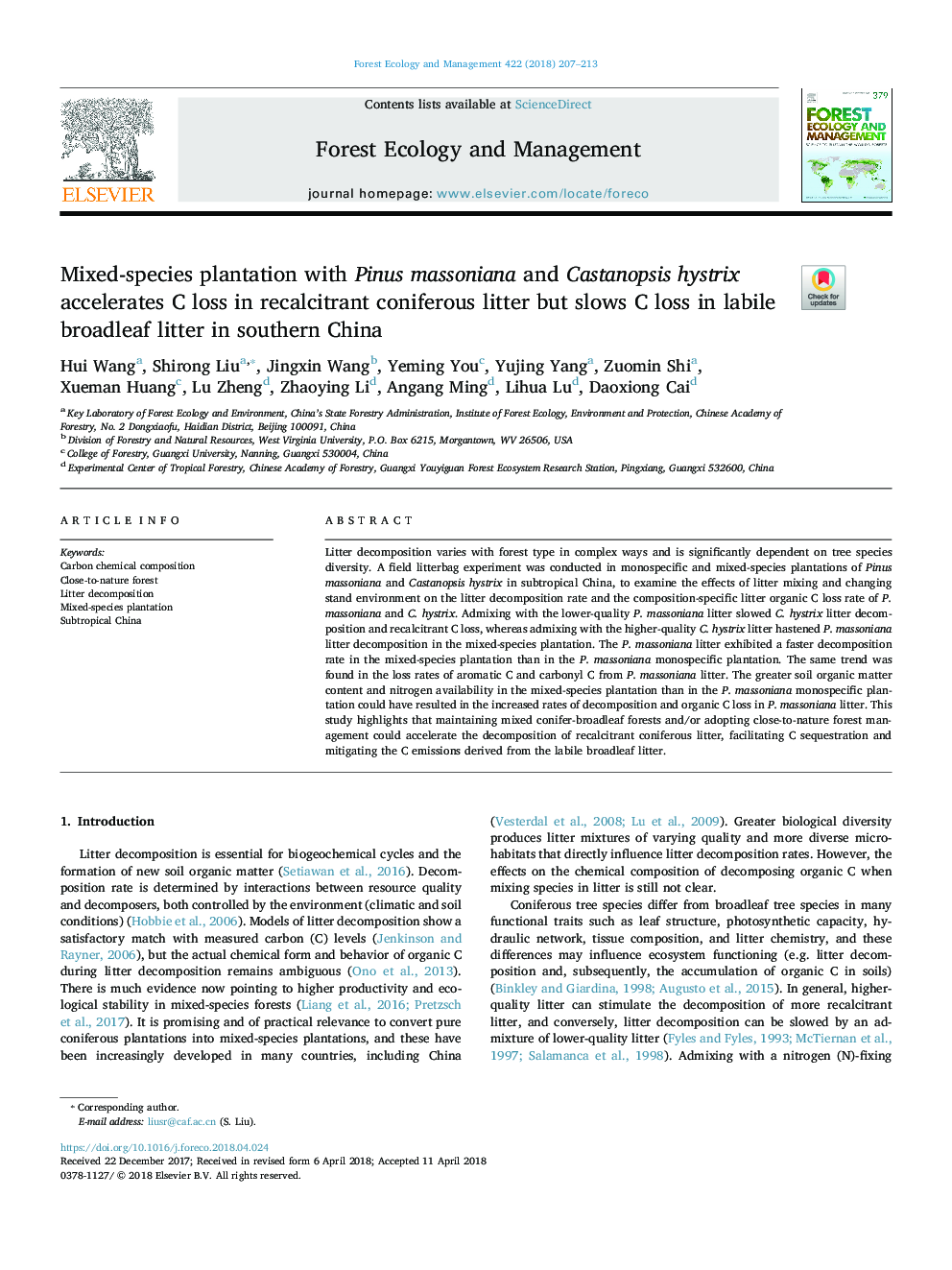| Article ID | Journal | Published Year | Pages | File Type |
|---|---|---|---|---|
| 6541666 | Forest Ecology and Management | 2018 | 7 Pages |
Abstract
Litter decomposition varies with forest type in complex ways and is significantly dependent on tree species diversity. A field litterbag experiment was conducted in monospecific and mixed-species plantations of Pinus massoniana and Castanopsis hystrix in subtropical China, to examine the effects of litter mixing and changing stand environment on the litter decomposition rate and the composition-specific litter organic C loss rate of P. massoniana and C. hystrix. Admixing with the lower-quality P. massoniana litter slowed C. hystrix litter decomposition and recalcitrant C loss, whereas admixing with the higher-quality C. hystrix litter hastened P. massoniana litter decomposition in the mixed-species plantation. The P. massoniana litter exhibited a faster decomposition rate in the mixed-species plantation than in the P. massoniana monospecific plantation. The same trend was found in the loss rates of aromatic C and carbonyl C from P. massoniana litter. The greater soil organic matter content and nitrogen availability in the mixed-species plantation than in the P. massoniana monospecific plantation could have resulted in the increased rates of decomposition and organic C loss in P. massoniana litter. This study highlights that maintaining mixed conifer-broadleaf forests and/or adopting close-to-nature forest management could accelerate the decomposition of recalcitrant coniferous litter, facilitating C sequestration and mitigating the C emissions derived from the labile broadleaf litter.
Related Topics
Life Sciences
Agricultural and Biological Sciences
Ecology, Evolution, Behavior and Systematics
Authors
Hui Wang, Shirong Liu, Jingxin Wang, Yeming You, Yujing Yang, Zuomin Shi, Xueman Huang, Lu Zheng, Zhaoying Li, Angang Ming, Lihua Lu, Daoxiong Cai,
